In an age of mass production and technological advancement, the value of traditional crafts is often overlooked. However, a new wave of designers is reimagining these time-honored techniques, seamlessly blending them with modern technologies to create innovative and culturally rich designs. These projects demonstrate the enduring power of craftsmanship and its potential to shape a more sustainable and expressive future for design.
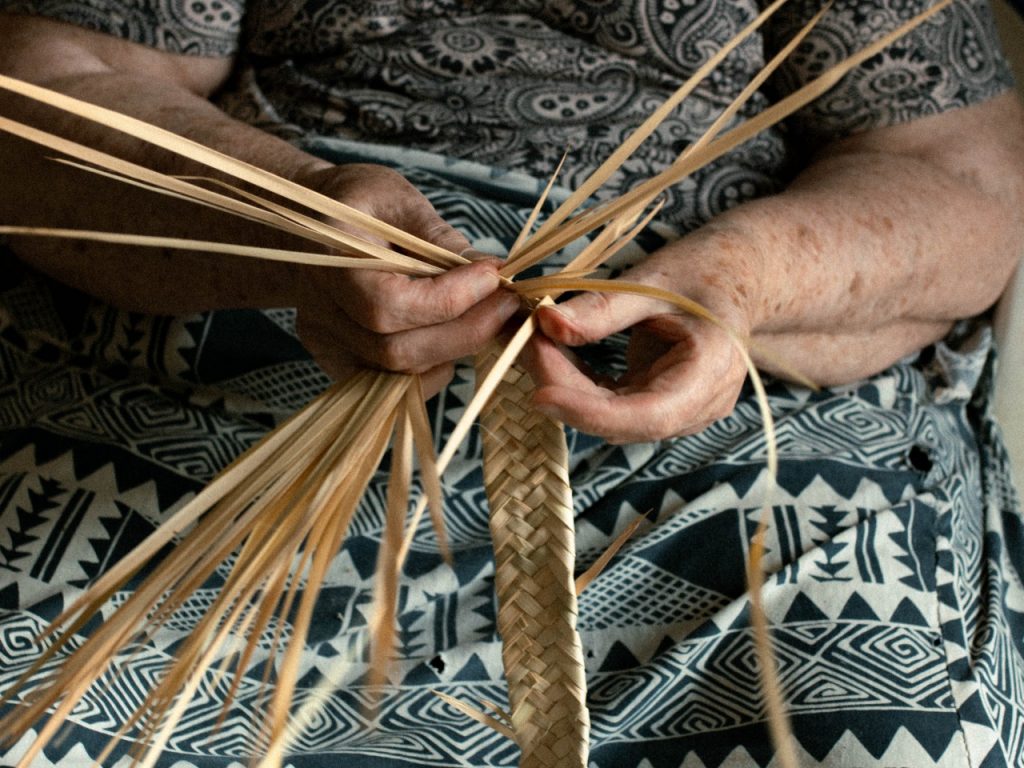
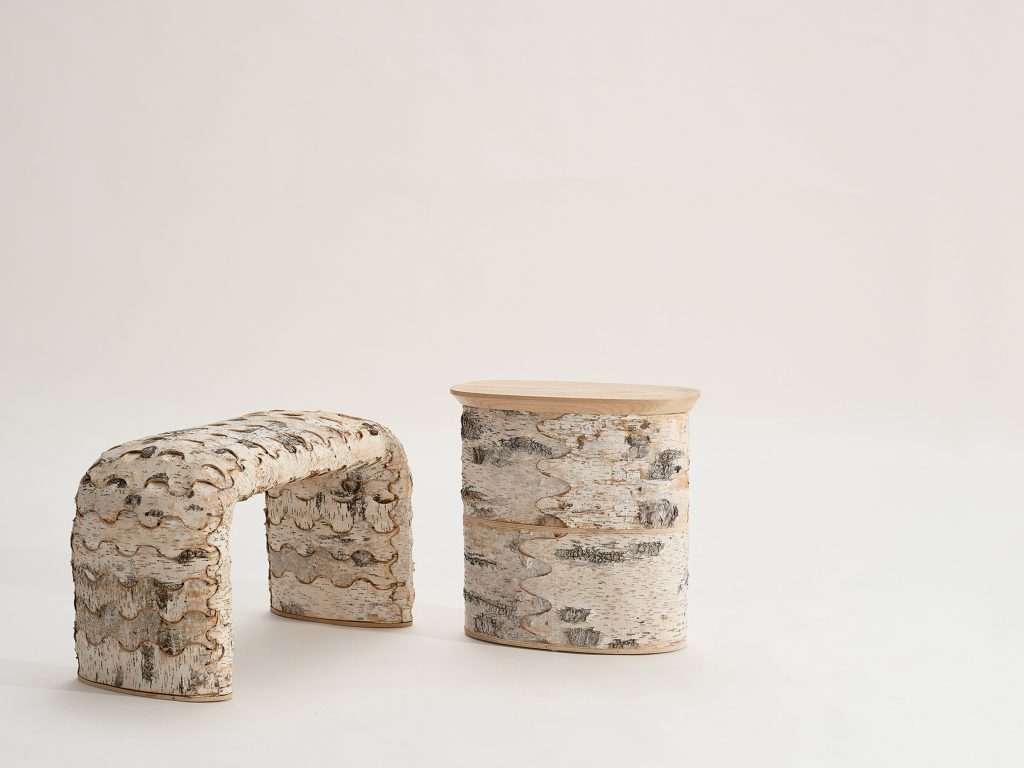
Birch Bark Stools by Sarina
Mongolian designer Sarina has unveiled a captivating duo of stools that celebrate the time-honored traditions of the Oroqen people of Inner Mongolia. These stools are not merely furniture; they are a testament to the enduring beauty and functionality of birch bark, a material deeply intertwined with the cultural heritage of the Oroqen, an ethnic group native to the region. Sarina masterfully reimagines this ancient craft for a contemporary audience, highlighting both its practical applications and its inherent artistic value.
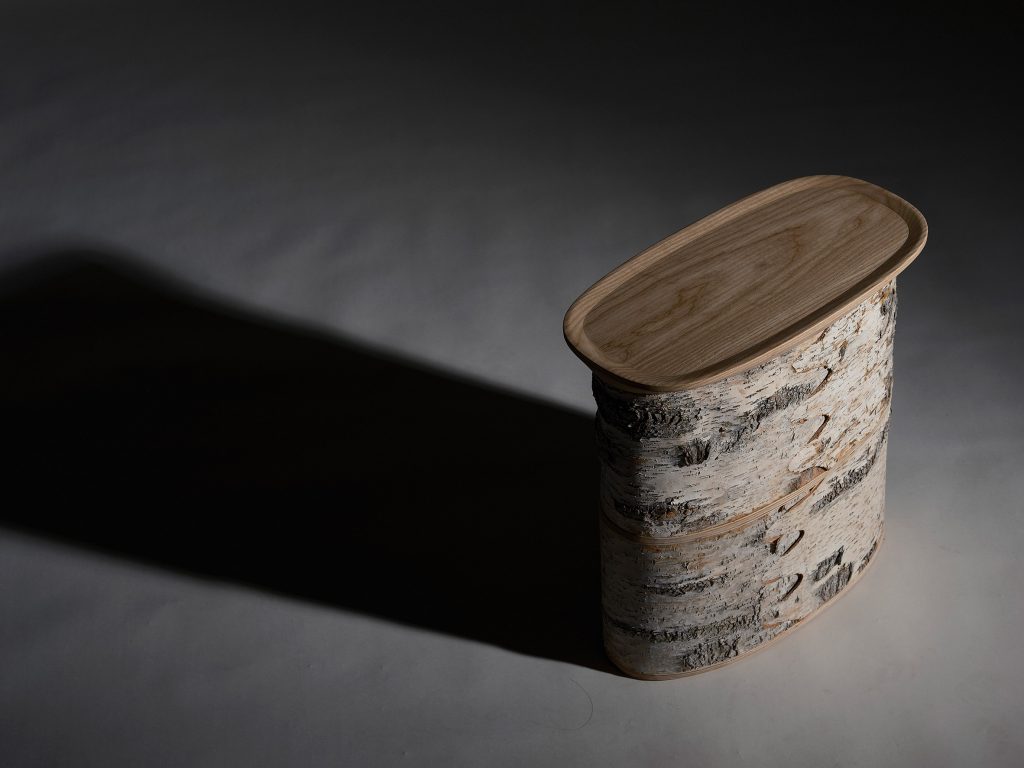
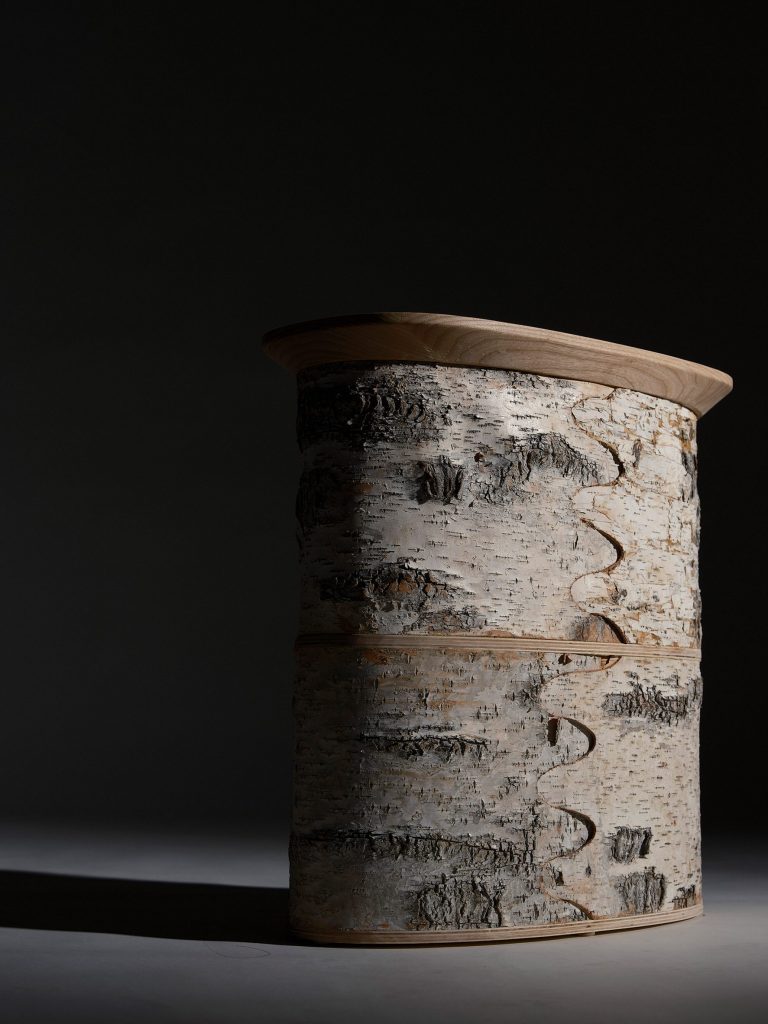
Birch Bark Stools by Sarina
What sets Sarina’s work apart is her innovative use of the birch tree’s outer bark, a distinctive silvery material adorned with grey knots and natural splits. This choice diverges from the traditional use of the inner bark and introduces a fresh, visual dimension to the craft. By preserving the outer bark’s unique texture, Sarina transforms each stool into a sculptural artwork, showcasing the inherent beauty of the natural world. The contrasting solidity and gentleness of the material allows viewers to experience a unique balance and harmony.
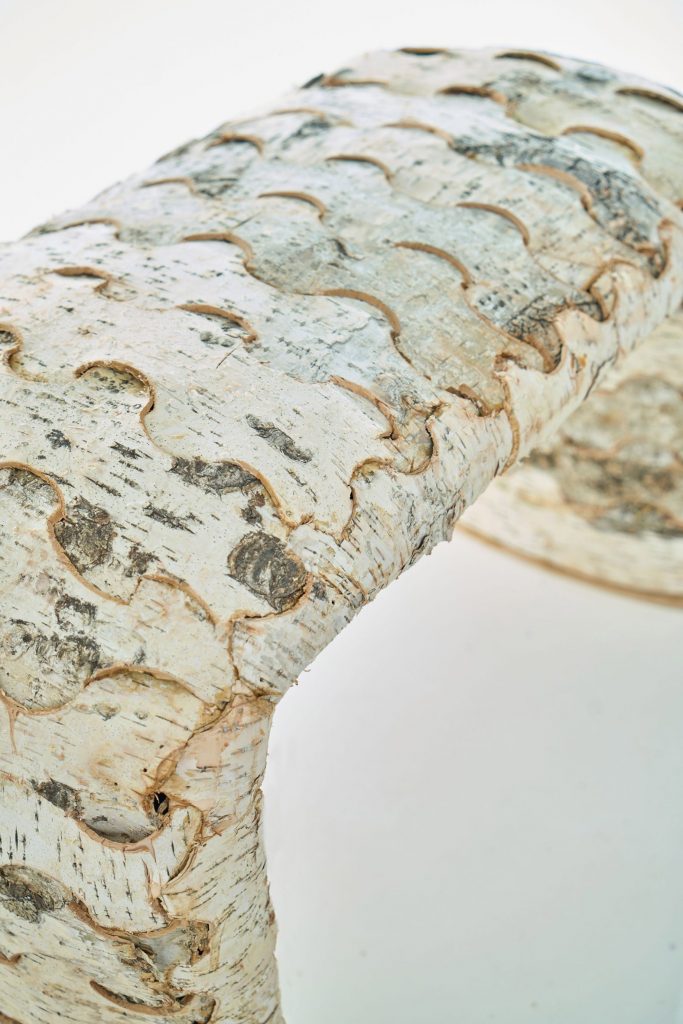
Birch Bark Stools by Sarina
The creation of these stools involves a meticulous process that honors Oroqen craftsmanship while incorporating modern techniques. Sarina treats the raw bark with traditional steaming methods, rendering it pliable and malleable, much like cardboard. This prepares the material for the next stage, where each piece is carefully hand-stitched together using traditional bark-splicing methods. The resulting seams are not hidden but celebrated, forming characterful scalloped, wavy details that add to the stools’ unique aesthetic.
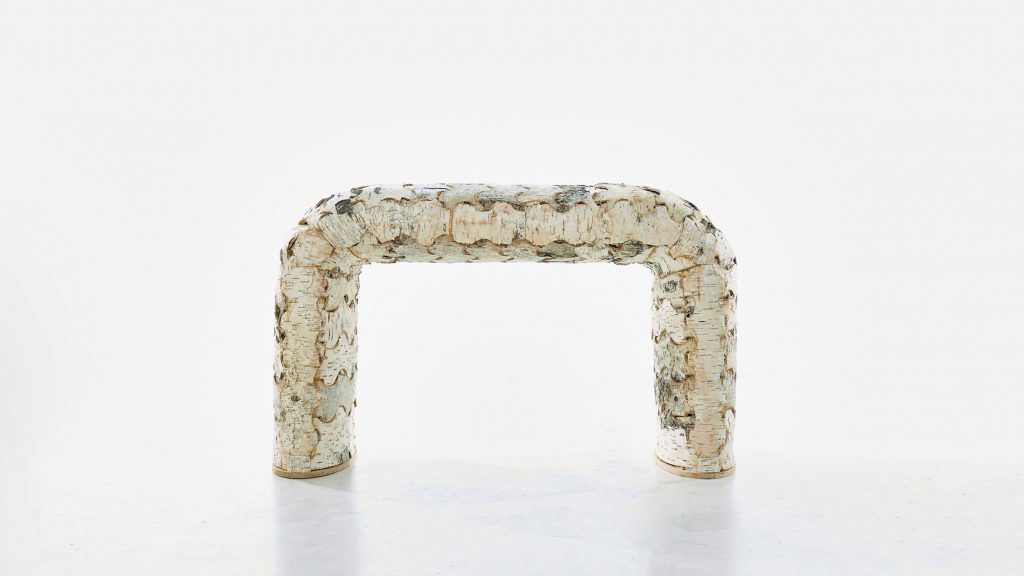
Birch Bark Stools by Sarina
Sarina’s stools seamlessly blend tradition with modern design sensibilities. Their simple, curved forms create an unexpected softness, contrasting with the inherent strength and weight associated with trees. Envisioned for use in residential spaces, these stools would complement a variety of interior styles, including Japanese, Scandinavian, minimalist, and rustic designs. Through her artistry, Sarina not only preserves and celebrates the Oroqen craft but also introduces it to a wider audience, ensuring its continued relevance in the contemporary design world.
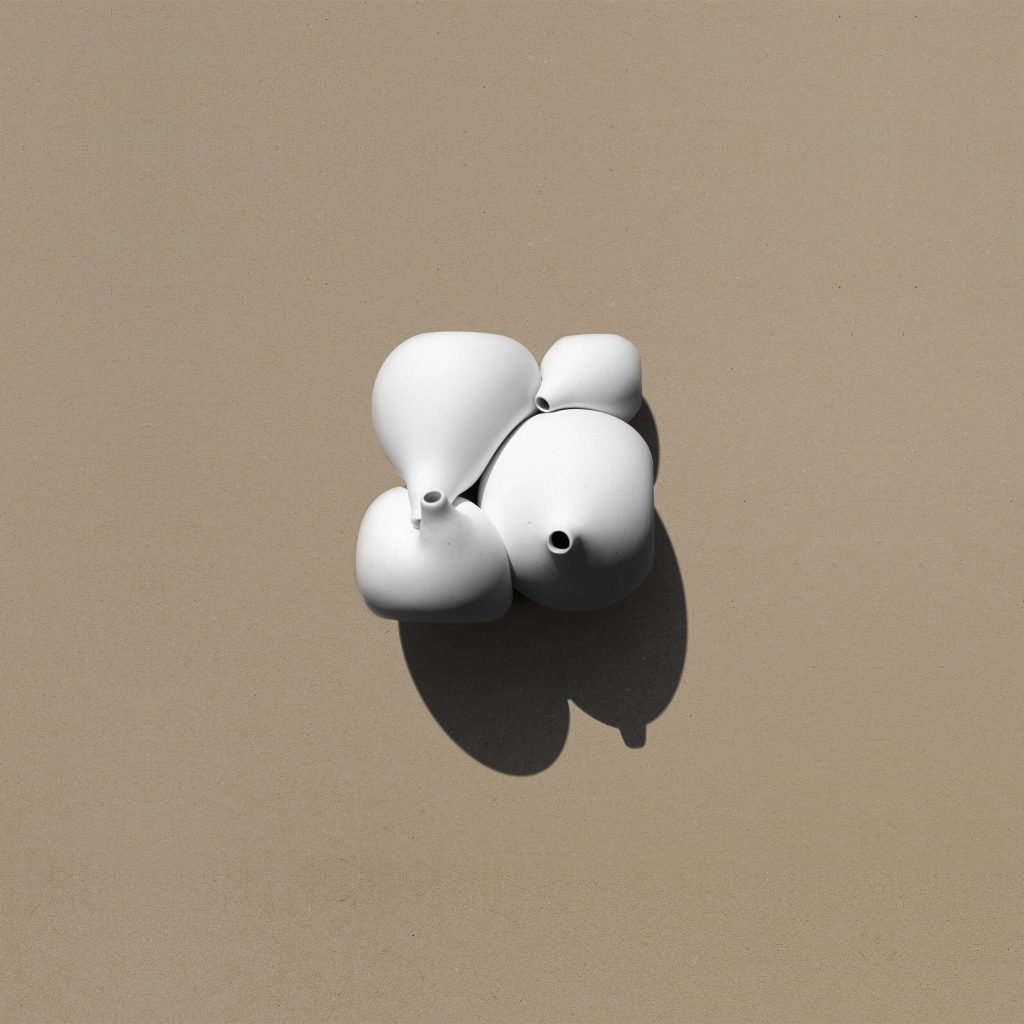
Jörg Hugo by Ceramic Bodies
Jörg Hugo’s Ceramic Bodies is a captivating collection of four porcelain vases that seamlessly merge traditional ceramic craftsmanship with cutting-edge digital design and production techniques. Hugo, trained as an architect, brings a unique perspective to his design work, exploring the interplay between materiality, form, and space. This project exemplifies his approach, reinterpreting the timeless art of handcrafted ceramics through the lens of modern technology.

Jörg Hugo by Ceramic Bodies
The distinctiveness of Ceramic Bodies lies in the intentionally deformed shapes of each vase. Dotted with imprints and depressions, the forms are not arbitrary but rather the result of geometric optimization. This technique identifies the ideal configuration to minimize structural mass and energy, resulting in vases that are both aesthetically intriguing and structurally sound. Each vase is designed to fit together with the others, creating a three-dimensional puzzle that showcases the precision of Hugo’s design process.

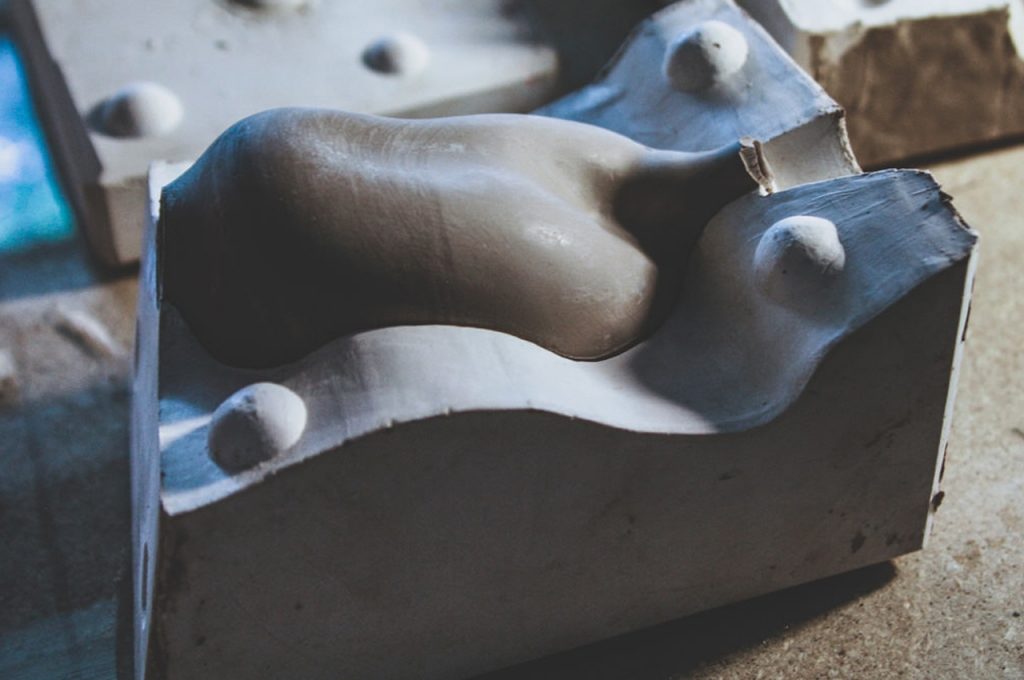
Jörg Hugo by Ceramic Bodies
The production of these seemingly organic forms is a testament to the power of combining traditional and digital methods. The plaster molds for each vase were CNC-milled from gypsum blocks, ensuring accurate sizing and streamlining the production process. Prior to production, each porcelain body underwent a detailed digital process, involving 3D scanning, re-topologizing, and modification. This digital intervention allowed Hugo to adjust the scale, adapt shrinking factors, and optimize the stability of each porcelain body efficiently.
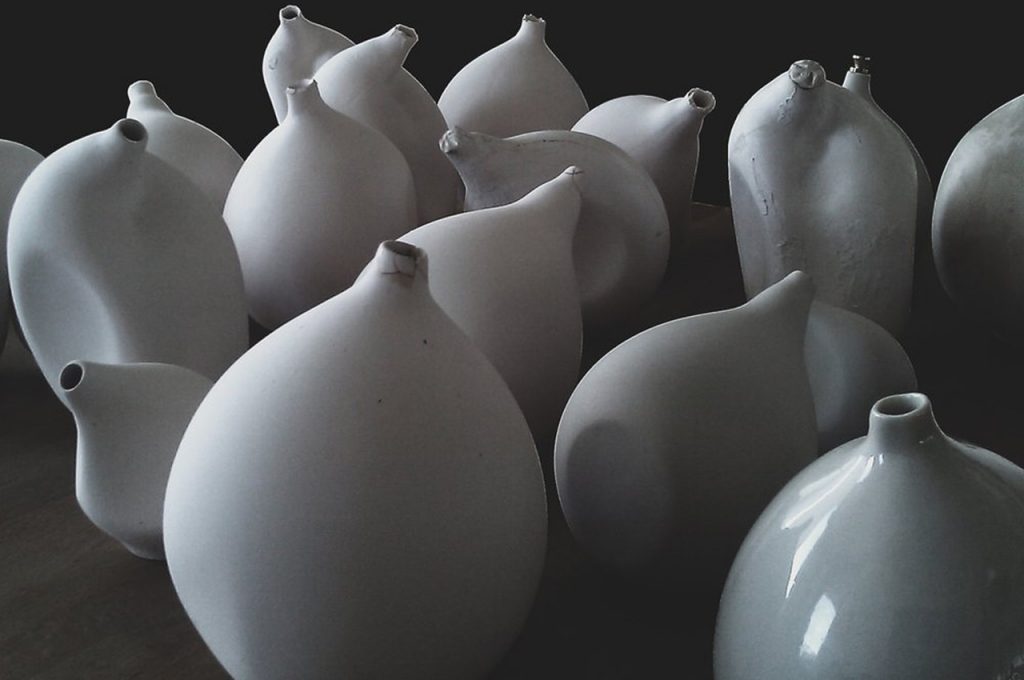

Jörg Hugo by Ceramic Bodies
Ceramic Bodies demonstrates how technology can enhance and transform traditional crafts. By leveraging digital tools, Hugo was able to save time while achieving a handcrafted aesthetic. The project showcases the potential for digital design and production to complement traditional ceramic techniques, opening new avenues for artistic expression and innovation within the field of ceramics.

Catalina by Antoni Martorell Pascual (also header image)
Designed by Milan-based designer Antoni Martorell Pascual, Catalina lamp stands as a powerful example of how traditional crafts can be ingeniously integrated into modern design. In an era dominated by advanced manufacturing and mass production, this lamp celebrates the enduring beauty and cultural significance of handmade craftsmanship, demonstrating that the values of the past can coexist harmoniously with the technologies of the present. The project also highlights the importance of supporting the livelihoods that depend on these traditions.
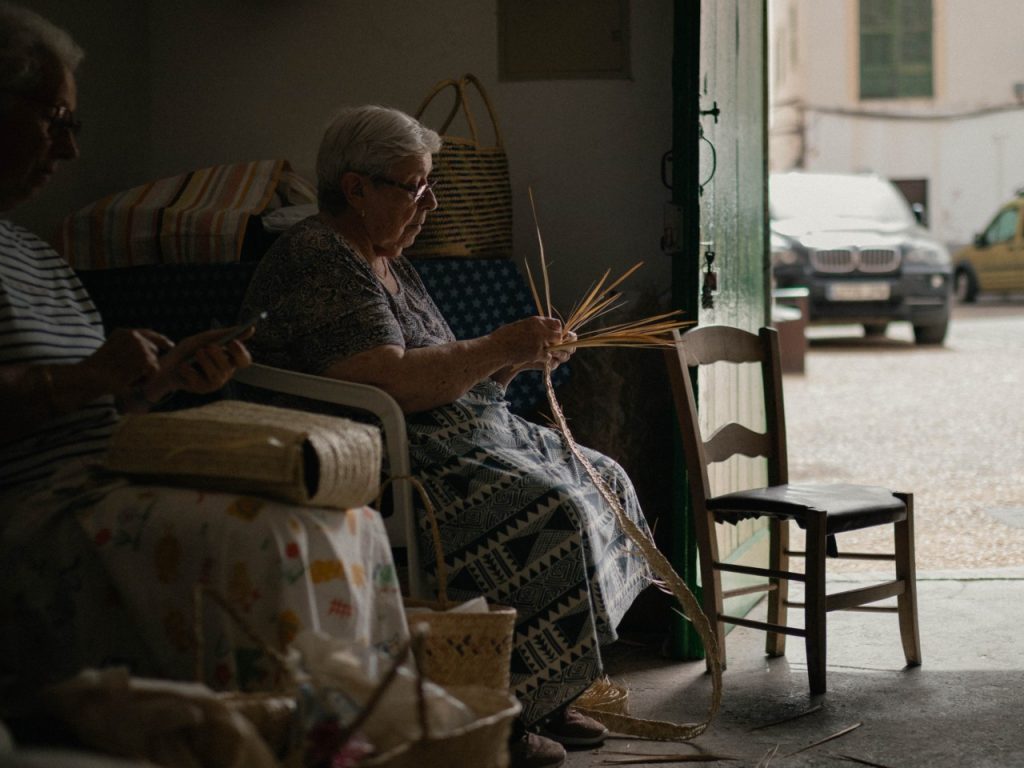
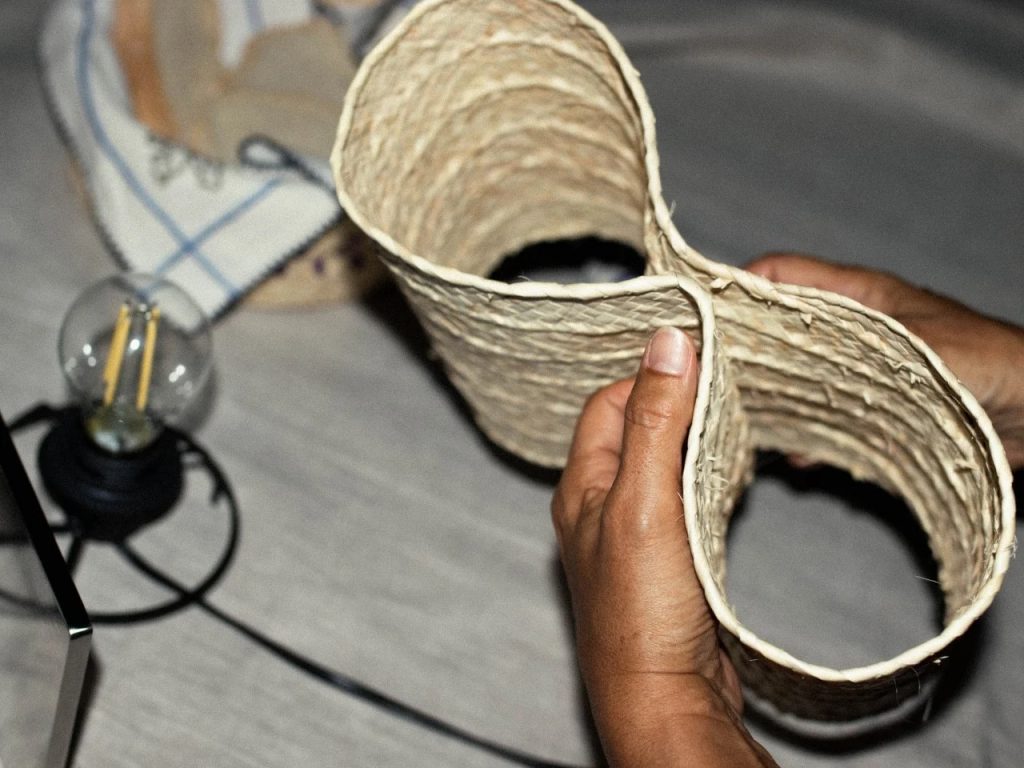
Catalina by Antoni Martorell Pascual
While mass production excels in creating standardized, readily available goods, it often sacrifices the personality, depth, and unique character that handmade products possess. Catalina seeks a middle ground, skillfully blending modern lamp electronics and foundations with a meticulously handwoven lampshade. This lampshade utilizes palmetto leaves and traditional “llata” weaving techniques from Mallorca, a practice passed down through generations, primarily by the women of the island.
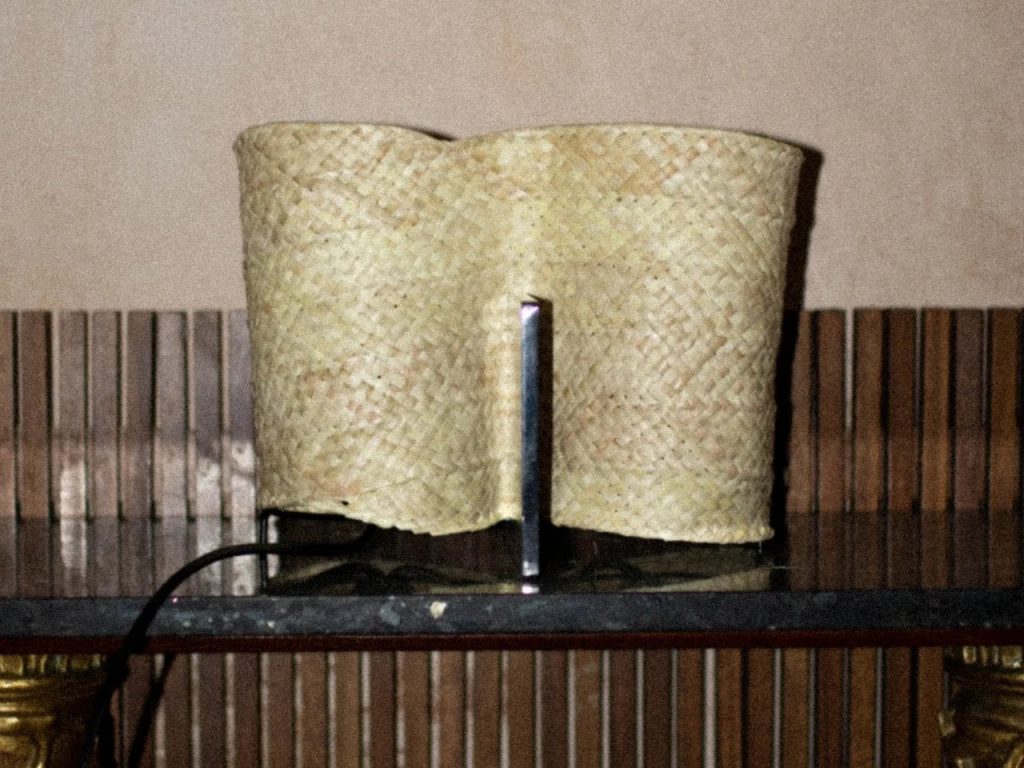

Catalina by Antoni Martorell Pascual
The lamp’s design features two cylindrical forms, reminiscent of a figure eight, crafted from the woven palm leaves. These forms enclose two bulbs, casting a serene glow that filters through the intricate weave, creating an ethereal, otherworldly light. A transparent sheet of glass or fiberglass bridges the gap between the two woven circles, serving as a diffuser to further enhance the ambient illumination.
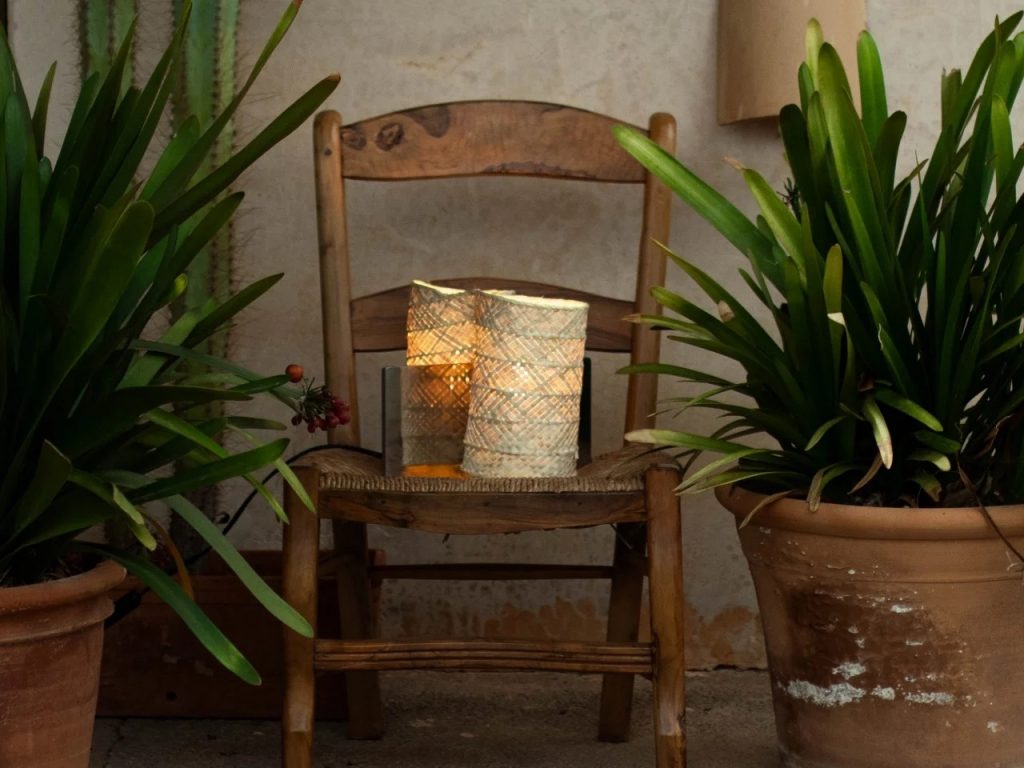
Catalina by Antoni Martorell Pascual
Catalina exemplifies how traditional craftsmanship can be elevated through modern design. The labor-intensive nature of handweaving makes each lamp unique, imbued with subtle imperfections that distinguish it from mass-produced alternatives. These imperfections become selling points, showcasing the lamp’s distinctive character and its connection to a rich cultural heritage.